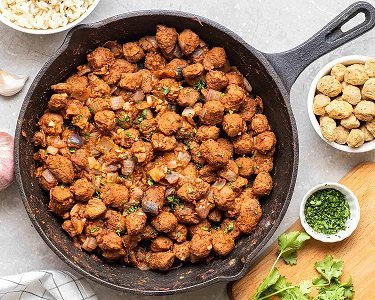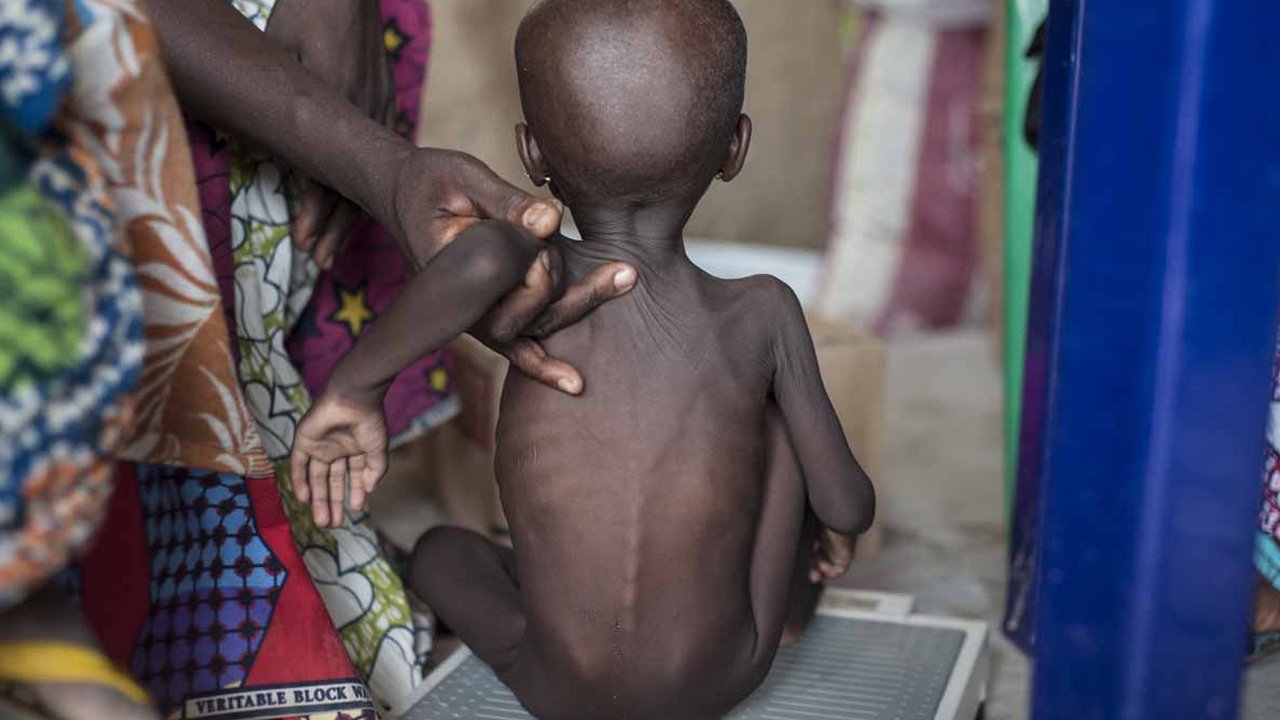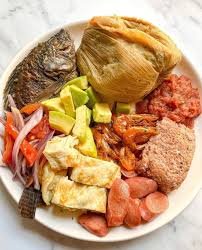Nutrition
Flavorsome soya chunks dry masala

Soya chunks
Soya chunks are also sometimes known as meal maker or nutri nuggets. Like TVP (textured vegetable protein), they are made from defatted soy flour, a byproduct after extracting soybean oil.
Hence, they are a great source of plant based protein, where a 50g serving provides more than 25g of protein and only about 170 calories. Their texture closely resembles that of meat, making them the perfect substitute for animal protein.
- Preparation:
- Soak soya chunks in hot water for around 10 minutes to rehydrate them. Make sure that sufficient hot water is used to fully cover them as they will expand upon soaking.
- Once your they have softened, drain and rinse with cold water. Using your hands, gentle squeeze out excess moisture.
- Place rehydrated chunks into a bowl and add in chili powder, garam masala and salt. Toss until everything is well incorporated. Set aside.
- Heat up a tablespoon or so of neutral oil in a non-stick pan or cast-iron skillet. Once pan is heated, add in onion and saute for 3-4 minutes until translucent. Next, add in garlic and saute for another minute.
- Now, add in tomato puree, water, garam masala, chili powder and coriander powder. Bring mixture to a boil, then lower heat to a gentle simmer. Let it simmer, covered for about 10 minutes.
- Lastly, toss in rehydrated chunks into the pan and stir to combine. Let it cook for several minutes, or until mixture appears dry. Your soya chunks masala is ready to be served!
Rice – This soya chunks masala is best paired with rice. You can simply do some basic steamed brown or white rice.
Source: https://www.myplantifulcooking.com/
Nutrition
Nourishing Ghana Starts with Us: The role of citizens

The success of Ghana’s fight against malnutrition does not rest solely in the hands of the government or donors. It depends on us, the citizens. Nutrition is not just a technical issue. It is a societal one, and every Ghanaian has a role to play in ensuring that no child goes hungry, no mother is left unsupported, and no community is forgotten.
As citizens, we must shift how we see nutrition: not as a private family concern, but as a collective national responsibility. Here’s how we can act:
1. Demand accountability
Every citizen has the right and responsibility to ask how public funds are being used to support nutrition. Are local clinics stocked with supplements? Are school feeding programmes working in your district? Are maternal health services adequately funded? Ask questions. Engage assembly members. Attend town hall meetings. Make your voice count.
2. Speak up, Speak out
Silence has a cost. When we fail to speak out against malnutrition, we normalise it. Use your platform, whether it is WhatsApp group, a radio show, a church gathering, or social media, to raise awareness. Normalise conversations about child feeding, food quality, and maternal health. Silence keeps systems broken. Voices drive change.
3. Support local solutions
Support or join community nutrition initiatives. Volunteer. Share what you know. Help spread accurate information about breastfeeding, healthy diets, and hygiene. If you are a farmer, teacher, trader, or youth leader, your knowledge and effort can make a difference. Change starts in our homes and neighbourhoods.
4. Protect the first 1,000 days
Whether you are a father, grandmother, neighbor, or employer, support pregnant women and caregivers during this crucial period. Encourage antenatal care. Help with child care. Prioritise nutritious foods. The first 1,000 days of a child’s life lay the foundation for everything that follows.
When citizens care, ask questions, take action, and show solidarity, we create the conditions for lasting change. Malnutrition is not inevitable. It is a symptom of neglect, and neglect ends when citizens choose to act.
Feature article by Women, Media and Change under its Nourish Ghana: Advocating for Increased Leadership to Combat Malnutrition Project
Nutrition
Ga Kenkey

Ga kenkey, a staple in Ghanaian cuisine, is prepared with fermenting corn dough, then cooking a portion of it to create ‘aflata’ or ‘banku’. It is a popular food in the southern part of Ghana.
Ingredients:
-8 cups of dried corn
-Dried corn leaves (for wrapping)
-2 tablespoonful of stew
Preparation
-Soak corn in water overnight
-Grind corn into a powder form
-Mix the ground corn with water (dough)
-Mix part of the dough with water and put it on fire to cook
-Take the pot off the fire and mix in the remaining dough .
– When ready shape mixture into balls and set every prepared ball on a corn leaf.
– Cover each ball by wrapping the corn leaf around it
– Put water on fire. Add wrapped kenkey to boil for 45 minutes.
– When ready take them out carefully and serve them along with shito, ground pepper and fish.






